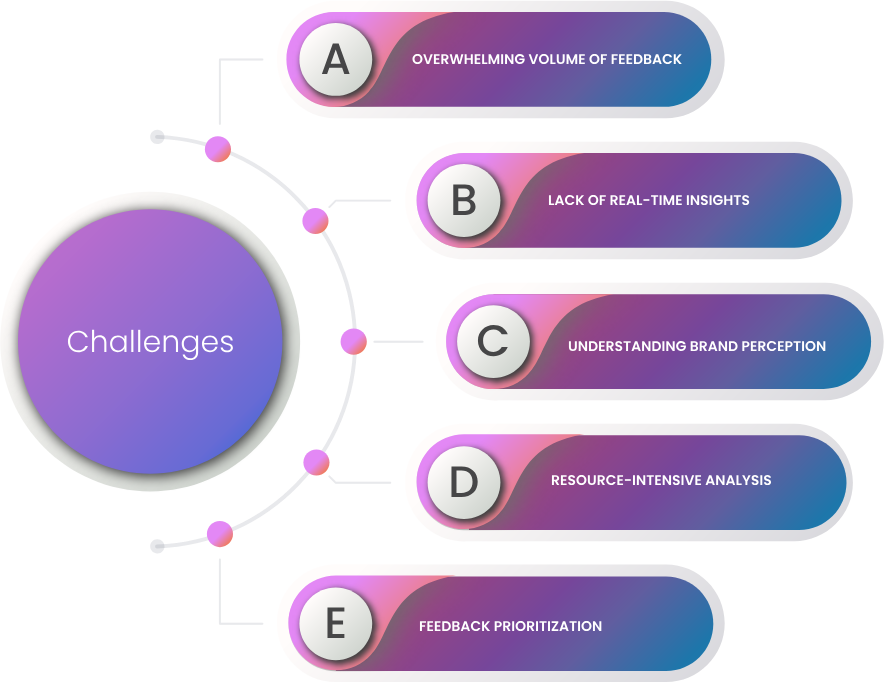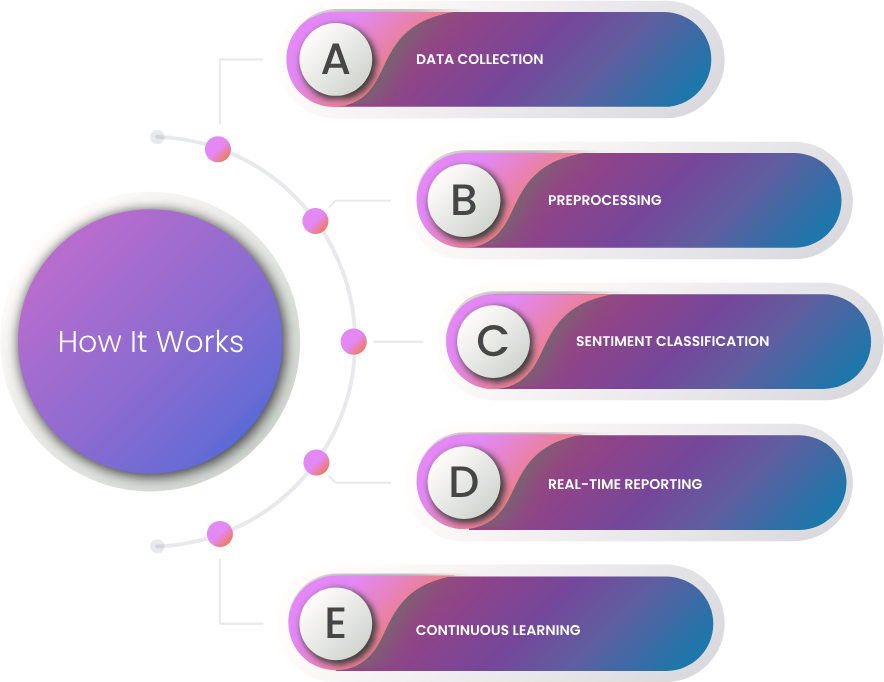Businesses face several challenges in understanding and leveraging customer sentiment, including:
Companies receive massive amounts of unstructured text data from various sources, making it difficult to analyze and derive meaningful insights.
Traditional methods of sentiment analysis can be slow and often miss the opportunity to act on customer feedback promptly.
Without effective sentiment analysis, businesses may struggle to gauge public perception, risking reputational damage or missed opportunities for improvement.
Manual analysis of customer feedback is time-consuming and may lead to inconsistent results, preventing businesses from responding to customer needs effectively.
Businesses are often inundated with feedback and lack the means to prioritize issues that matter most to their customers. Sentiment analysis helps rank concerns by analyzing the emotional intensity and frequency of feedback, ensuring critical product issues are addressed first.

Our algorithms utilize natural language processing (NLP) to classify text sentiment as positive, negative, or neutral, offering a comprehensive understanding of customer opinions.
The solution provides immediate sentiment insights, allowing businesses to respond quickly to customer feedback and enhance their engagement strategies.
The model can analyze data from various sources, including social media, online reviews, customer support interactions, and surveys, ensuring a holistic view of brand sentiment.
Businesses can receive detailed reports that highlight sentiment trends, helping to inform strategic decisions and marketing initiatives.
The solution gathers text data from various sources such as social media, customer reviews, support tickets, and surveys.
The text data is cleaned and preprocessed to remove noise and irrelevant information, ensuring accurate analysis.
AI algorithms analyze the text, classifying sentiment as positive, negative, or neutral based on learned patterns and contextual understanding.
The system generates real-time insights and visualizations, allowing businesses to monitor sentiment trends and track changes over time.
The sentiment analysis model continuously improves as it processes more data, ensuring its accuracy and relevance.
